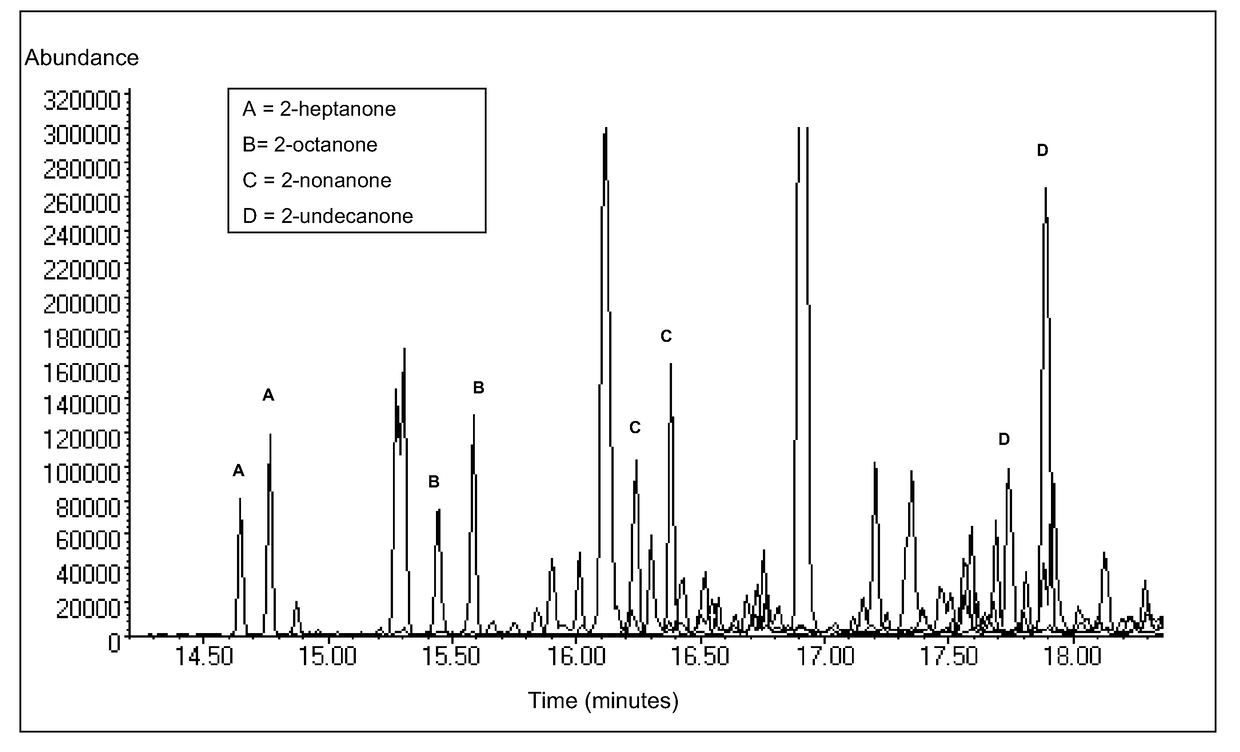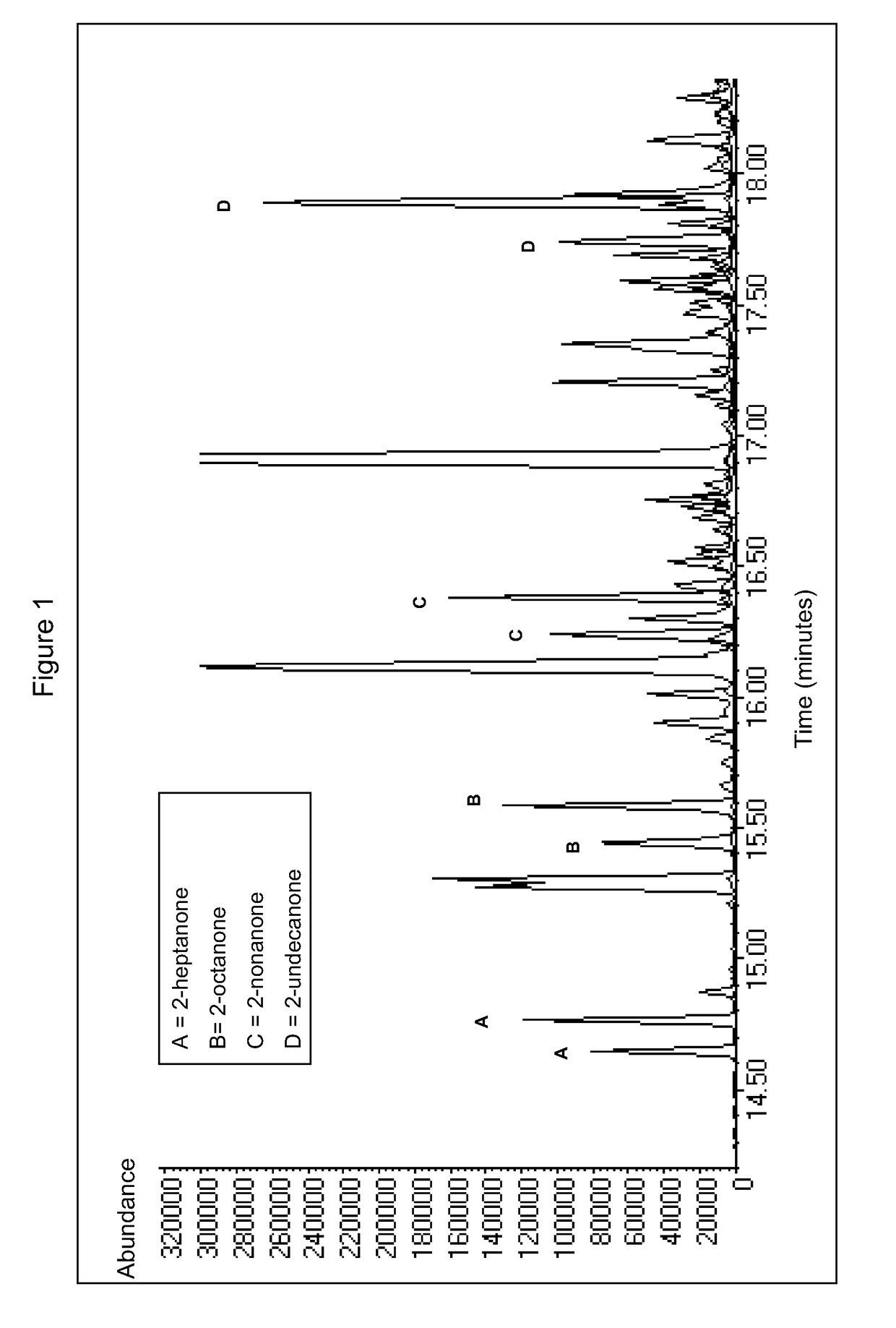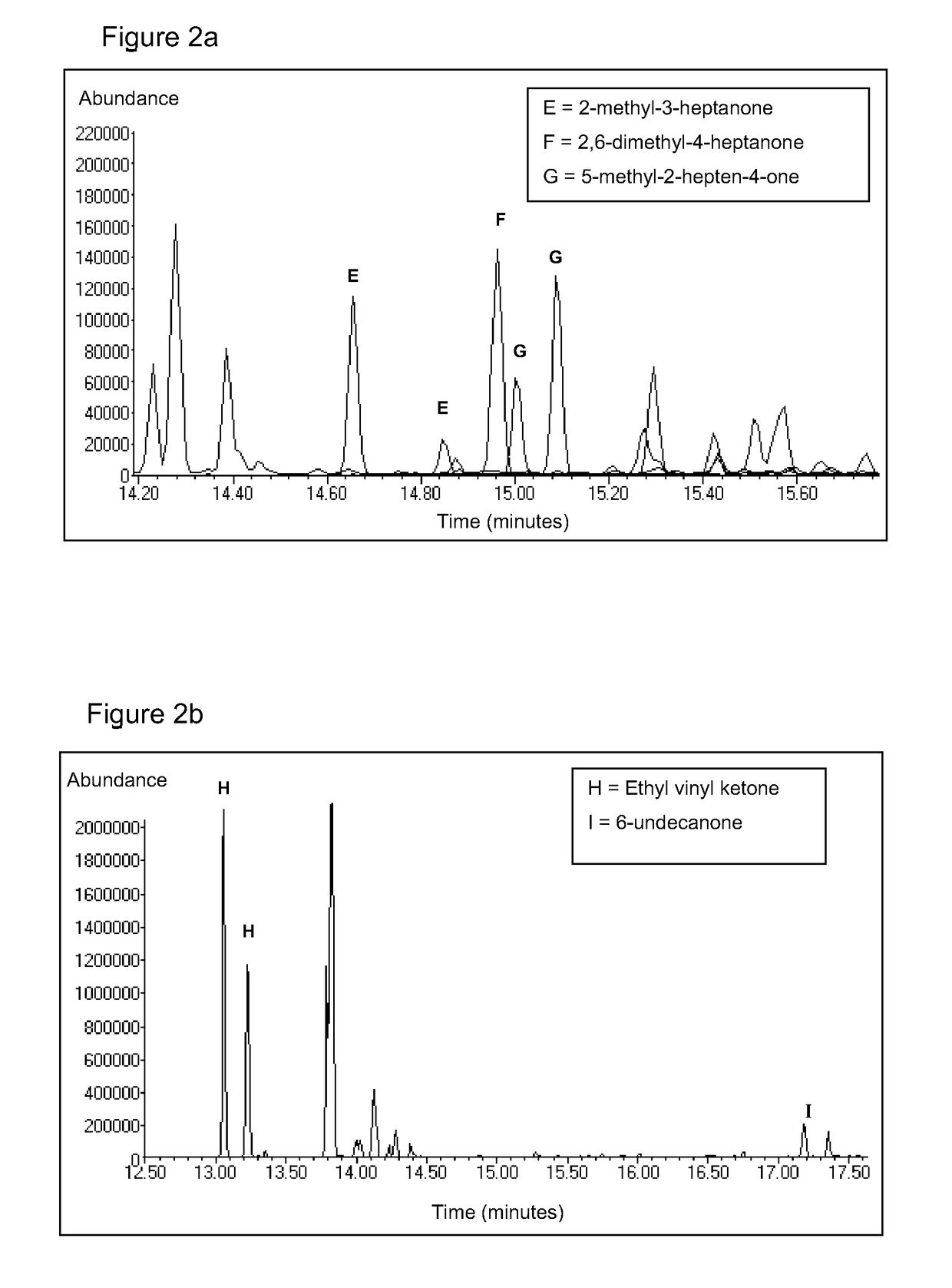Tagging method
a natural product and tag technology, applied in the field of tagging a natural product, can solve the problems of large amount of land required, undesirable consequences for the environment and biodiversity, and achieve the effect of low solubility and high volatility
- Summary
- Abstract
- Description
- Claims
- Application Information
AI Technical Summary
Benefits of technology
Problems solved by technology
Method used
Image
Examples
example 1
[0019]2-Heptanone, 2-octanone, 2-nonanone and 2-undecanone were each dissolved in crude palm oil at a concentration of 500 ppb. 10 mL of the tagged oil was then extracted with 5 mL of methanol whilst stirring for 1 hour at 60° C. The extract containing the tags was removed. 5 mL of 1 mg / mL aqueous O-(2,3,4,5,6-pentafluorobenzyl)hydroxylamine hydrochloride (PFBHA) was added to the extract and incubated for 2 hours at 60° C. with vigorous stirring. The reaction mixture was then extracted with 2.5 mL chloroform whilst stirring for 20 minutes at 60° C. The chloroform layer containing the derivatives was removed and dried through a cotton wool plug prior to analysis by GC / MS in negative chemical ionisation (NCI) mode. The GC / MS instrumentation used was an Agilent® 6890 GC with Agilent 5973 Mass Selective Detector equipped with J&W Scientific™ HP-5 capillary column (30 m length, 0.32 mm i.d., 0.25 mm stationary phase thickness). The initial oven temperature was 50° C. which was held for 5...
example 2
[0020]2-Methyl-3-heptanone, 6-undecanone, ethyl vinyl ketone, 5-methyl-2-hepten-4-one and 2,6-dimethyl-4-heptanone were each dissolved in crude palm oil at a concentration of 500 ppb. 10 mL of the tagged oil was then extracted with 5 mL of methanol whilst stirring for 1 hour at 60° C. The extract containing the tags was removed. 5 mL of 1 mg / mL aqueous O-(2,3,4,5,6-pentafluorobenzyl)hydroxylamine hydrochloride (PFBHA) was added to the extract and incubated for 2 hours at 60° C. The reaction mixture was then extracted with 2.5 mL chloroform whilst stirring for 20 minutes at 60° C. The chloroform layer containing the derivatives was removed and dried through a cotton wool plug prior to analysis by GC / MS using the same apparatus and method as described in Example 1. For the derivatives of 2-methyl-3-heptanone, 6-undecanone, ethyl vinyl ketone, 5-methyl-2-hepten-4-one and 2,6-dimethyl-4-heptanone signals of m / e 303, 345, 259, 301 and 317 respectively were monitored. FIGS. 2a and 2b show...
PUM
| Property | Measurement | Unit |
|---|---|---|
| length | aaaaa | aaaaa |
| length | aaaaa | aaaaa |
| length | aaaaa | aaaaa |
Abstract
Description
Claims
Application Information
 Login to View More
Login to View More - R&D
- Intellectual Property
- Life Sciences
- Materials
- Tech Scout
- Unparalleled Data Quality
- Higher Quality Content
- 60% Fewer Hallucinations
Browse by: Latest US Patents, China's latest patents, Technical Efficacy Thesaurus, Application Domain, Technology Topic, Popular Technical Reports.
© 2025 PatSnap. All rights reserved.Legal|Privacy policy|Modern Slavery Act Transparency Statement|Sitemap|About US| Contact US: help@patsnap.com



